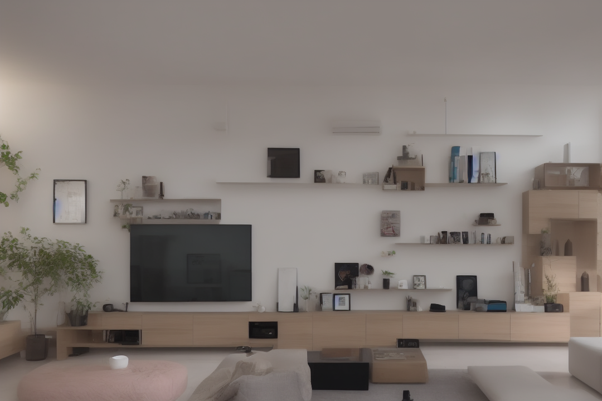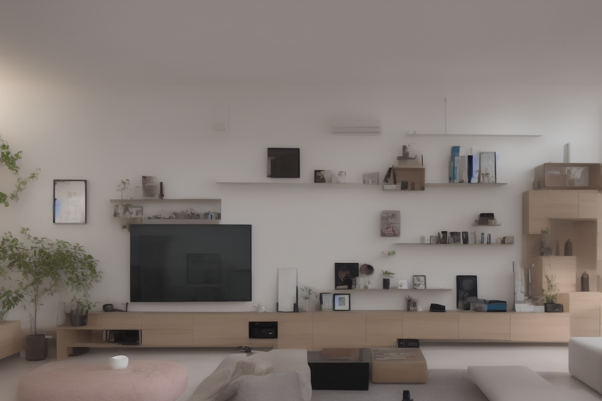

Along with aging, the people’s physical and mental performance tend to decrease. Various digital devices and software are available to maintain independent living. Often, however, the problem is the difficulty of introducing and using them. Solutions for this can be found in zero user interface technology, where the interaction between the user and the system is based on, for example, the user's speech and movements. This article opens up the principles and applications of the zero user interface with a focus on supporting the elderly living at home.
Even as people get older, they want to live and function independently in their own homes. However, health problems and physical limitations often come with age. That can make daily tasks challenging, for example following hygiene routines or preparing a meal can be difficult and forgetful. Problems arising from memory difficulties can also become challenges, such as forgetting to take medication and difficulties in following daily routines. However, these things are important for maintaining health and well-being.
Problems can grow and become even more difficult when things are attempted to be automated and digitized with the help of devices and software that are complex to use. If a person has difficulties in carrying out everyday routines, tools that are difficult to learn and use do not make life easier at least.
Fortunately, things are not black and white, but as a solution, zero user interface technology (Zero UI) can be applied in the communication between users and systems. Zero user interface technology refers to the design and development of user interfaces that require little or no operation of devices or applications. It utilizes natural human ways of communicating, such as speech and gestures, to provide a seamless and intuitive user experience.[1, 4, 5, 6]
What does zero user interface mean in practice?
Behind the zero user interface are technological solutions that enable people to interact with digital devices and services without traditional graphical user interfaces, such as screens, keyboards or mice. The goal is to make the interaction more natural and seamless by combining the way between man and machine to communicate in a natural way for humans, for example by applying the following things [1, 3, 4, 5]:
1. Speech recognition and synthesis: Users can issue commands and receive feedback using voice. Examples of such applications are digital assistants based on speech recognition, such as Apple Siri, Google Assistant and Amazon Alexa. Applications that use extensive artificial intelligence models are also related to this concept, for example the California-based company OpenAI's service ChatGPT.
2. Recognition of gestures and movements through image analysis: Devices that recognize the user's gestures and movements can enable interaction without physical contact. Examples of this technology are various machine vision applications as well as movement controllers by Microsoft Kinect and Nintendo Wii, which are applied in the game systems.
3. Haptic feedback: Haptic feedback refers to a physical sensation, such as vibration or pressure, transmitted to the user through the device. For example, smartphones, smartwatches, and game controllers often use haptic feedback through, for example, vibration alarms.
4. Biometric identification: Face, fingerprint and voice identification are examples of biometric identification methods. They can be used to replace the use of passwords and access codes.
5. Location-related feedback: different functions can be started by locating the user's location. This is also called geofencing (see https://www.techtarget.com/whatis/definition/geofencing). An example of such functionality is the control of smart lighting based on the user's movements: it is enough to carry a device equipped with positioning, and the lights can be turned on and off according to its location.
By applying zero user interfaces, the aim is to improve the user experience and make the use of technology easier and more adaptable for different user groups. These types of user interfaces can be especially useful for the elderly, the disabled, or those who are not used to using traditional digital devices.[1, 3, 5, 6]
Examples of effortless use of digital systems
Zero user interface thinking can be applied in smart homes and smart cities. Such solutions allow users to manage devices and services in a natural way without a cumbersome orientation process. Here are examples of implementations [1, 2, 3]:
1. Interactive screens can be placed for easy use, for example, in controlling daily fitness and similar exercises.
2. Smart furniture can be designed to monitor inhabitant’s activity and report it to caregivers, which in turn helps maintain the safety.
3. An important aspect of using zero-interface technology to support the elderly people is the detection of falls or falls. Falls are one of the leading causes of injury in the elderly and can lead to serious medical complications or even death. Zero user interface technology can be used to prevent falls and to detect and notify caregivers or, if necessary, emergency services.
4. Zero UI-based gamification is an effective technique for motivating and engaging elderly people by making activities more enjoyable and interactive through reward systems, challenges, tasks, leaderboards and storytelling.
5. Zero user interface technology can also help maintain hygiene routines with touch-free soap dispensers, hand washing, showering and rinsing.
6. Personalization, such as personal music playlists, personal voice assistants and personal programs, can also motivate elderly people. The zero user interface technology can detect emotions and movements and perform actions according to them, possibly improving the mood of the elderly person. Reminders to take medicine or prepare a meal can also help them maintain routines.
Summary
Digitalization enables several ways to help and motivate elderly people. Examples of these are maintaining daily routines, exercising, setting achievable goals, reading books or developing new skills. Creating a sense of purpose and usefulness is important in maintaining people’s motivation.
Zero UI-based solutions can help users achieve the aforementioned goals. Smart home systems can be used to automate tasks such as turning lights on/off, adjusting room temperature, locking/unlocking doors and opening/closing curtains. All these auxiliary functions help elderly people to cope with their everyday life independently.
Overall, easy-to-use digital services can help older people live meaningful lives. By utilizing this technology, elderly people can use various activities and services intuitively, allowing them to remain independent and live meaningful life. It could be a valuable tool in responding to the challenges brought about by aging and in securing the well-being of elderly people living alone at home.
Links to help deepen the topic
Shah, R., Zero UI To Help The Elderly, Master’s thesis, 52 pages, Information Technology, Metropolia UAS, 2023. (https://urn.fi/URN:NBN:fi:amk-2023111629668)
Chan, M., Usability Testing With Older Adults, Nielsen Norman Group, 2023. (https://www.nngroup.com/articles/usability-testing-older-adults/)
De Cola, M., Maresca, G., D'Aleo, G., Carnazza, L., Giliberto, S., Grazia Maggio, M., Bramanti, A., Calabrò, R., Teleassistance for frail elderly people: A usability and customer satisfaction study, Geriatric Nursing, Volume 41, Issue 4, 2020, Pages 463-467, ISSN 0197-4572, https://doi.org/10.1016/j.gerinurse.2020.01.019. (https://www.sciencedirect.com/science/article/pii/S0197457220300550)
Beaubien, S., Your Beginner's Guide to Zero UI, CareerFoundry, 2022, (https://careerfoundry.com/en/blog/ui-design/what-is-zero-ui/)
Karm, V., How Zero UI is Changing the Mobile Development Market, Bootcamp, 2023, (https://bootcamp.uxdesign.cc/why-zero-ui-is-the-future-of-interface-design-896c2cb748c7)
Deep, M., Experiencing Zero-UI on a daily basis, UX Planet, 2023, (https://uxplanet.org/experiencing-zero-ui-on-a-daily-basis-8e4f8fe78b89)
Aarne Klemetti
Researching lecturer,
Software, HyTe and Smart,
School of ICT and industrial management,
Metropolia UAS
Ruchi Shah
Master of engineering
Softa, HyTe and Smart,
School of ICT and industrial management,
Metropolia UAS



